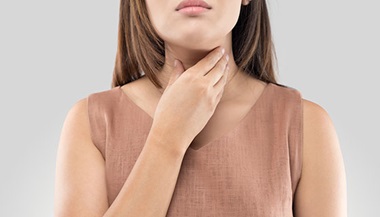Allergic Rhinitis in Children
What is allergic rhinitis in children?
Rhinitis is a reaction that happens in the eyes, nose, and throat when allergens in the air trigger the release of histamine in the body. Histamine causes itching, swelling, and fluid to build up in the fragile linings of nasal passages, sinuses, and eyelids.
Allergic rhinitis can happen on a seasonal basis or year-round. Year-round allergic rhinitis happens more often in younger children. There is usually a family history of allergic rhinitis.
What are the causes of allergic rhinitis in children?
The most common causes of allergic rhinitis in children are:
-
Pollen from trees, grass, or weeds
-
Dust mites
-
Mold
-
Cockroach waste
-
Animal dander
-
Tobacco smoke
What are the symptoms of allergic rhinitis in children?
The following are the most common symptoms of allergic rhinitis. However, each child may experience symptoms differently. Symptoms may include:
-
Sneezing
-
Stuffy nose
-
Runny nose
-
Itchy nose, throat, eyes, and ears
-
Nosebleeds
-
Clear drainage from the nose
Children with year-round allergic rhinitis may also have these symptoms:
-
Ear infections that keep coming back
-
Snoring
-
Breathing through the mouth
-
Poor performance in school
-
A line or crease across the bridge of the nose from swiping the nose
The symptoms of allergic rhinitis may look like other conditions or medical problems. Always talk with your child’s health care provider for a diagnosis.
How is allergic rhinitis in children diagnosed?
Typically, the diagnosis is made by your child’s health care provider based on a thorough medical history and physical exam. During the exam, your child’s health care provider may also find dark circles under the eyes, creases under the eyes, and swollen tissue inside the nose. If this is the case, then your child’s health care provider may refer your child to see an allergist. An allergist is a doctor who is trained to do allergy skin testing. This will tell you exactly what things are causing your child to have symptoms.How is allergic rhinitis in children treated?
Your child’s health care provider will figure out the best treatment for your child based on:
-
How old your child is
-
His or her overall health and medical history
-
How sick he or she is
-
How well your child can handle specific medications, procedures, or therapies
-
How long the condition is expected to last
-
Your opinion or preference
The symptoms of allergic rhinitis sometimes look like other conditions or medical problems. Always see your child’s health care provider for a diagnosis.
Treatment options for rhinitis may include:
-
AntihistaminesNose sprays
-
Decongestants
-
Medicines for asthma symptoms
-
Allergy shots
Who is at risk for allergic rhinitis?
Children with asthma are at a higher risk for rhinitis. Allergic rhinitis is a common problem that may be linked to asthma. However, this link is not fully understood. Experts think that since rhinitis makes it hard to breathe through the nose, it is harder for the nose to work normally. Breathing through the mouth does not warm, filter, or humidify the air before it enters the lungs. This can make asthma symptoms worse.
Controlling asthma may help control allergic rhinitis in some children.
Can allergic rhinitis in children be prevented?
Preventive measures for avoiding allergic rhinitis include:
-
Controls in your environment, such as air conditioning during pollen season
-
Avoiding areas where there is heavy dust, mites, molds
-
Avoiding pets
When should I call my child’s healthcare provider?
If your child’s symptoms get worse or if he or she has new symptoms, call your child’s healthcare provider.Key points about allergic rhinitis in children
-
Rhinitis is a reaction that happens in the eyes, nose, and throat when allergens in the air trigger the release of histamine in the body.
-
Common causes of allergic rhinitis include pollen, dust mites, mold, cockroach waste, animal dander, and tobacco smoke.
-
Treatment options include avoiding the allergen and medicines to treat your child’s symptoms.
Next steps
Tips to help you get the most from a visit to your child’s health care provider:-
Before your visit, write down questions you want answered.
-
At the visit, write down the names of new medicines, treatments, or tests, and any new instructions your provider gives you for your child.
-
If your child has a follow-up appointment, write down the date, time, and purpose for that visit.
-
Know how you can contact your child’s provider after office hours. This is important if your child becomes ill and you have questions or need advice.




